Dating a C&P Pilot Press
This past weekend I was fortunate enough to win an auction for a C&P oldstyle Pilot press in my area.
Thankfully a good scrub and new rollers look to be all I need to get it functional!
Though this brings me to a question that google offered me little insight into, how to date a pilot press. The closest I have gotten is an article that stated the Pilot name on the rear of the press was only used until the early 20th century. Anyone know of a way to get a more definitive answer?
Thank you in advance,
Sean
LetterPeddlerPress
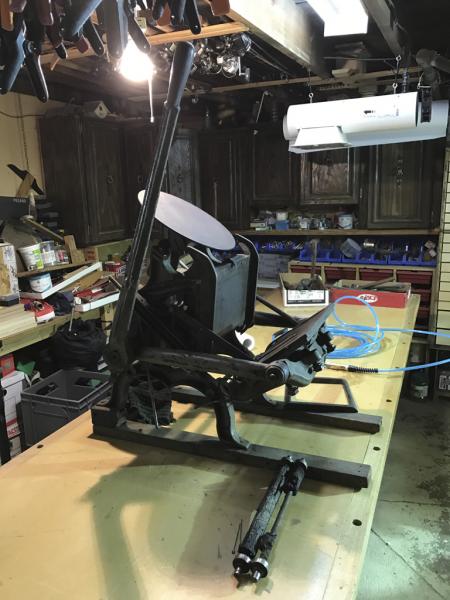
LPPPilotPress004.jpg
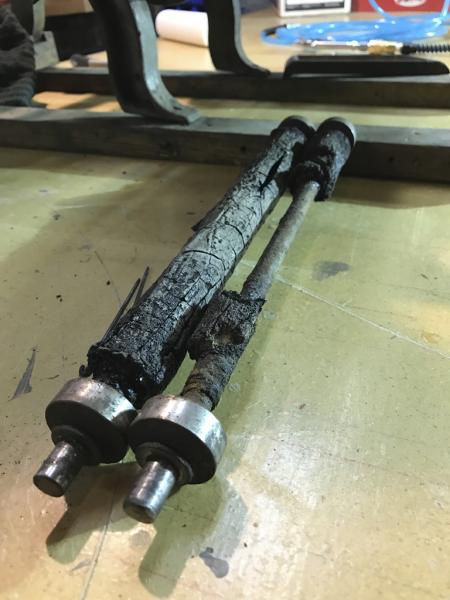
LPPPilotPress005.jpg
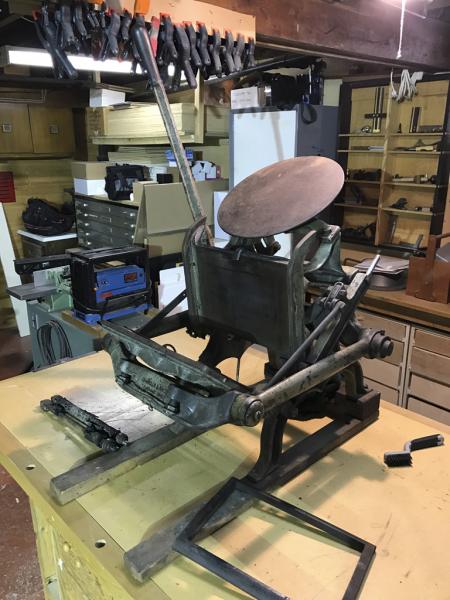
LPPPilotPress006.jpg
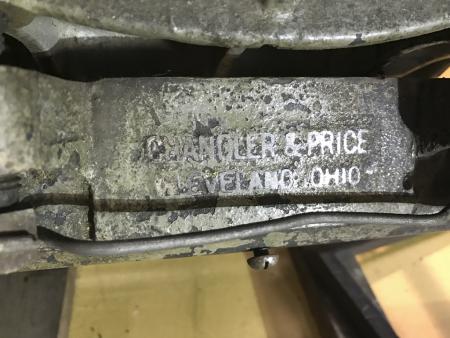
LPPPilotPress007.jpg
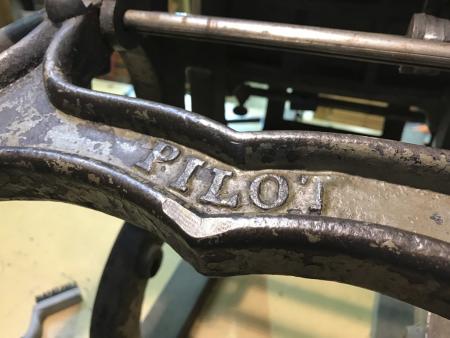
LPPPilotPress008.jpg
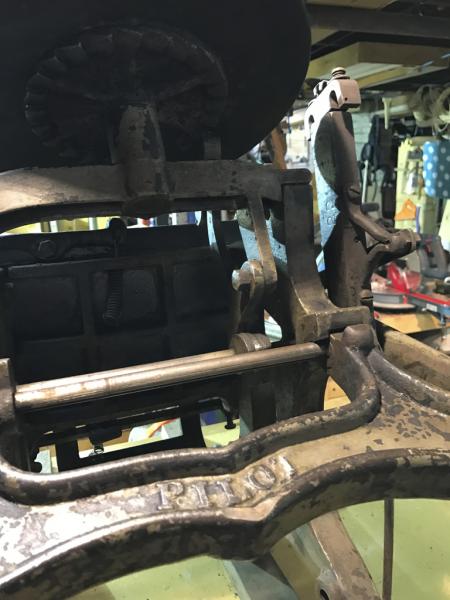
LPPPilotPress010.jpg
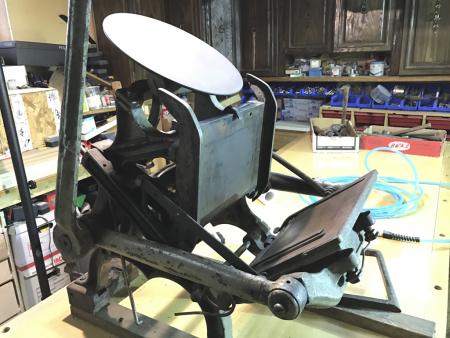
LPPPilotPress012.jpg
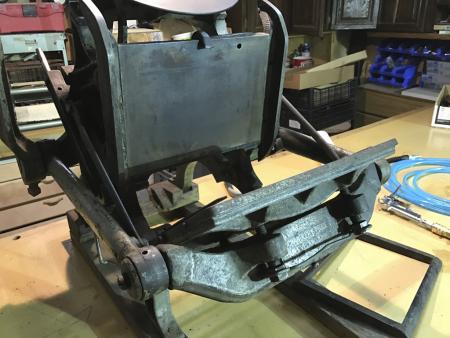
LPPPilotPress013.jpg
I’m sure someone will chime in with a joke about dating a printing press so I’ll leave that to others.
As for the Pilots there are no known records of serial numbers or manufacturing information. You have a ‘regular’ or Old Style Pilot so it’s likely that it’s probably from the early 1900s. The side arms on the press aren’t fluted like some of the earliest examples I’ve seen so it’s probably somewhere closer to the 1930s or 40s.
That’s not much help really… but it’s probably about as good as it gets. Others may have more information, but probably nothing terribly specific.
Brad.
Brad, I sure walked into that one!
Thanks for the tips about sidearms. Hopefully I can come across more information about its heritage and narrow it down that way some more.
Sean
Sean,
This is an interesting point about the “pilot” name in the casting being used only on the earlier Old Style Pilot presses. I have an Old Style like yours but do not have the “pilot” name in the casting. Can you point me to the article where you read this? It could be a way to identify earlier vs later models of the Old Style Pilot press.
John
From what I have tracked down…
http://www.briarpress.org/32910
Ink Spot says “We have been told that C & P began production of the Improved Pilot (N.S.) in 1914.”
There is further mention of that here:
http://excelsiorpress.org/platenpresses/Pilot/Thorp-Cleveland/index.html
“When Chandler & Price announced their “New Series” of free-standing Platen Job Presses (8x12, 10x15, 12x18, 14x22) to the commercial market in 1914, they continued to promote what we know as the “Early Series” Pilot as the only bench-top press offered. “
but then this one says that castings were updated around 1950
http://www.apa-letterpress.com/T%20&%20P%20ARTICLES/Press%20&%20Presswor...
This one has a bit more information and some photos of details
http://www.briarpress.org/25177
The post I saw that you’re asking about..of course a day later I cannot find! I know Stephen Saxe’s name was associated with it. I will dig deeper and see if I can find it.
I think C&P didn’t start serializing their [old style/original] Pilots until 188. They didn’t put the “Pilot” name on the castings until closer to when the New Style’s were issued, but I don’t know the year.
I found this links:
https://web.archive.org/web/20110916091951/http://www.press817.com/C%26P...
https://hernironworks.com/chandler-and-price-serial-numbers/.
New Style Pilots came out in the early 1900s-1910s and have a much more modern, less ornate, style than the old styles. It looks like you have an Old Style.
You may be able to find a serial number on the press bed, upper left either on the face of the bed or along the edge. Some of these are pretty faint or covered in grime or rust, so they may not be immediately clear.
The original paint was very pretty, with gold pin-striping.
I believe several observations can help determine when in the sequence of manufacture a particular press may have emerged.
The oldest Pilot presses certainly have fluted side arms and may have enclosed small ends (no washers just a hole through which a screw held the arm in place at the rocker. They also have no key stock at the lever end nor do they have jam nuts on the platen adjusting screws.
The later O.S. Pilots may have a 5/8” shaft upon which the yoke articulates. All of the early presses have two 1/2” diameter bolts with thin heads to allow the rear portion of the roller frame to clear the yoke. I estimate we have restored about 20 O.S. Pilots in the past 12 years. So my two cents is based upon observation and a bit of critical thinking as to manufacturing evoution. One must also consider the very likelihood that a press in your possesion may not have all of its original parts.
We have yet to encounter a O.S.Pilot with a serial number. We have restored several with the Pilot cast into the yoke as pictured.
As a side note we restored a O.S. Pilot with the name plate cast in upside down on the rocker. I thought the customer would reject the press upon sharing that detail but instead was delighted.
We have more experience with N.S. Pilots and could share many observations and thoughts upon its evolution.
Tom
T and T Press Restoration
www.tandtpressrestoration.com